France, the cradle of culture and art, has long been a dream destination for those who cherish beauty. Renowned not only for its painting, literature, and architecture, France is also the birthplace of masterful sculptors and their enduring legacies. As the 20th century dawned, French sculpture experienced a powerful resurgence, embracing diverse movements from Impressionism and Surrealism to Cubism, Fauvism, and Pop Art, resulting in a fresh and innovative artistic landscape.
In this article, join “Du lịch khắp thế gian” as we explore famous sculptures in France, admire the talent and creativity of the artists, and delve into the stories and meanings behind each masterpiece.
Auguste Rodin (1840-1917) – The Father of Modern Sculpture
Auguste Rodin, one of the greatest sculptors of all time, is hailed as the “father of modern sculpture.” Born in Paris, Rodin left behind a monumental legacy of emotionally charged and realistic sculptures, profoundly expressing the beauty and tragedy of the human condition.
The Thinker (1880)
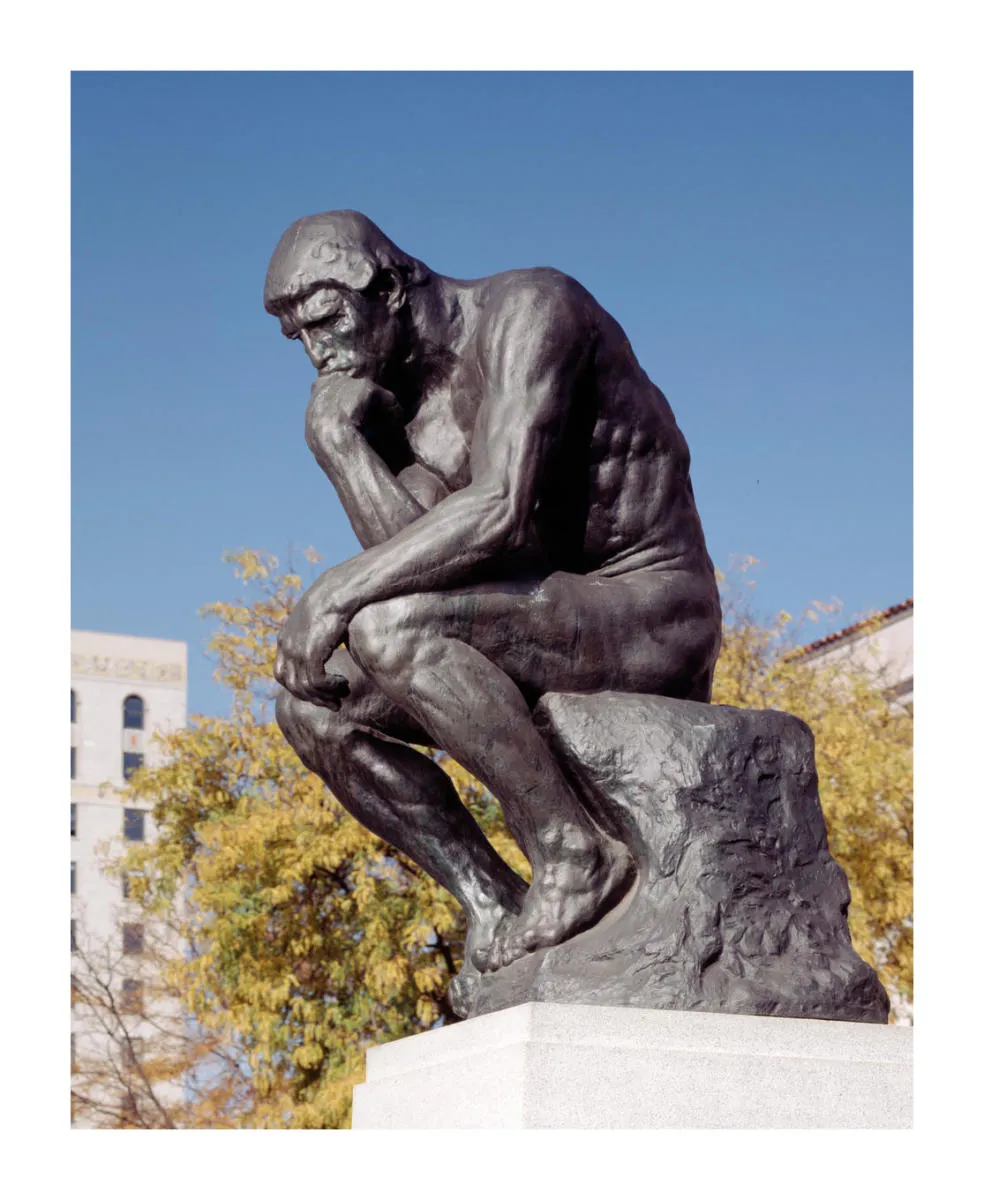
“The Thinker” is one of Rodin’s most iconic works, depicting a man in deep contemplation atop a rock. This piece is not only a symbol of sculpture but also an emblem of thought, intellect, and human nature. The statue portrays a muscular man with his head bowed, lost in a stream of profound thoughts.
The Kiss (1889)
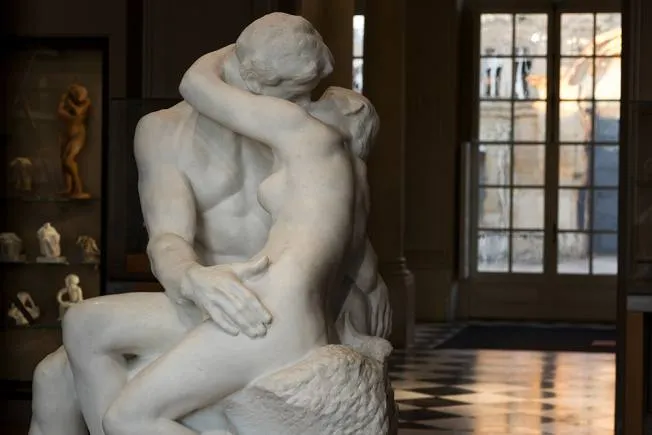
“The Kiss” is a romantic and sensual sculpture, depicting a couple locked in a passionate embrace. Considered one of the most beautiful sculptures of love ever created, it embodies passion, desire, and the eternal beauty of love.
The Burghers of Calais (1889)

“The Burghers of Calais” is a large-scale work, symbolizing the noble sacrifice of six burghers of Calais during the Hundred Years’ War. Each figure in the sculpture exhibits distinct expressions, conveying raw and authentic emotions ranging from fear and anxiety to determination and courage.
Balzac (1898)
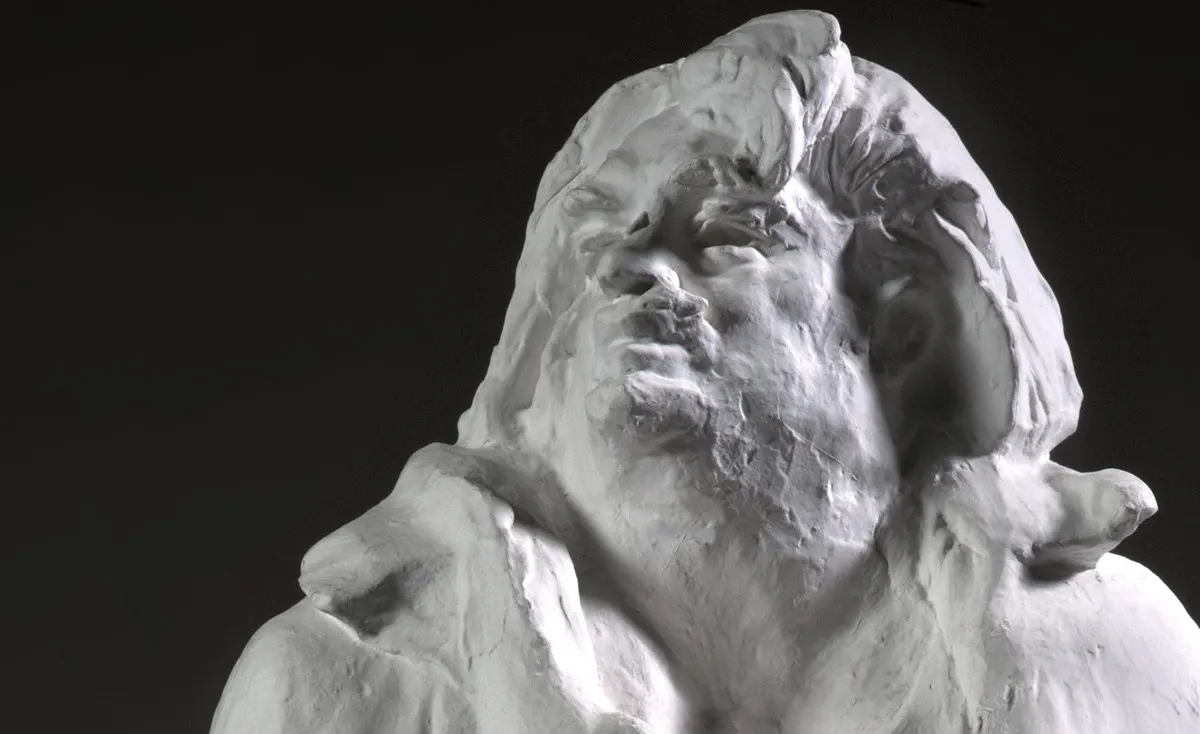
The monument to writer Honoré de Balzac is one of Rodin’s most controversial works. Its abstract style and Balzac’s unconventional depiction sparked much debate. However, over time, this piece has gained greater appreciation and is now regarded as a symbol of innovation and breakthrough in sculptural art.
Eternal Springtime (1884)
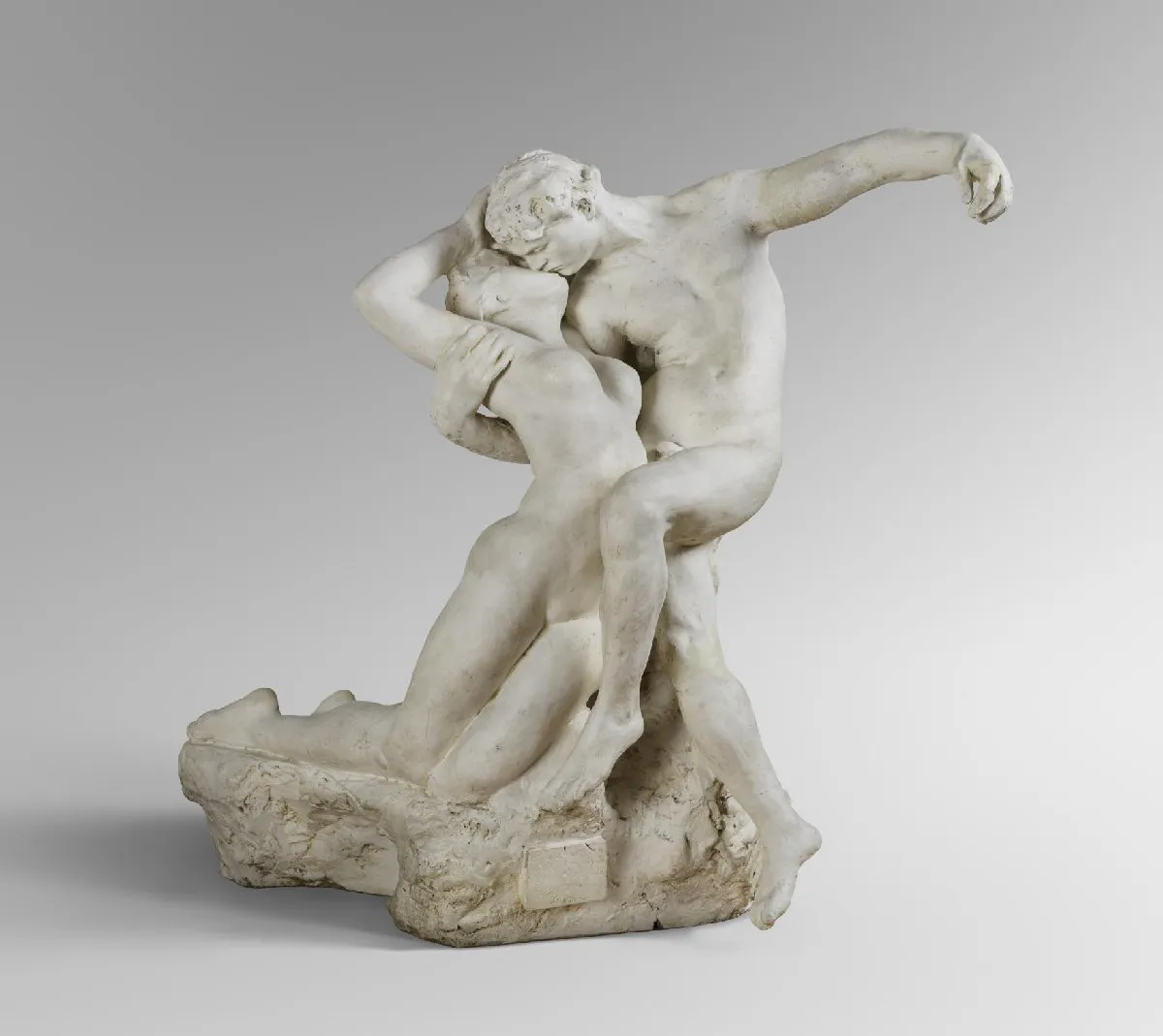
“Eternal Springtime” is a smaller work, portraying two young lovers immersed in love. This sculpture embodies youthfulness, vitality, and the beauty of young love.
Constantin Brâncuși (1876-1957) – A Pioneer of Abstract Sculpture
Constantin Brâncuși, a Romanian sculptor, is renowned for his significant contributions to abstract sculpture. He created simple, refined works, focusing on fundamental shapes and the underlying essence of objects.
The Kiss (1908)
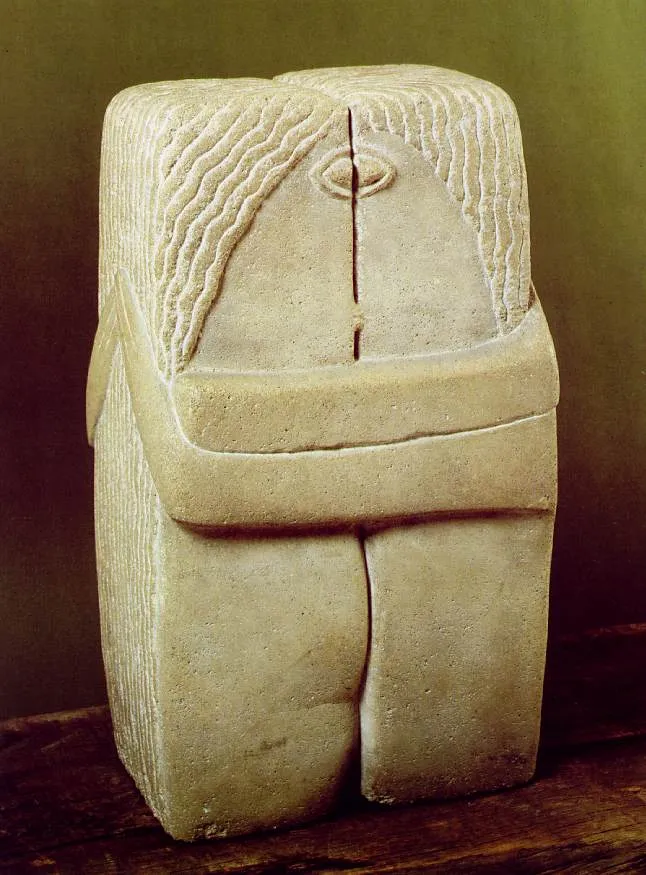
Brâncuși’s “The Kiss” is an abstract work, expressing the bond between a man and a woman through geometric blocks. This piece exemplifies simplicity, refinement, and the ability to convey profound emotions through abstract forms.
Bird in Space (1923-1924)
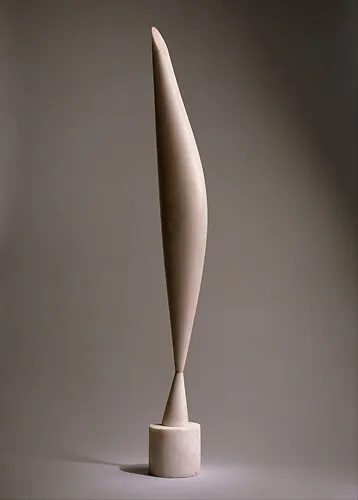
The “Bird in Space” series reflects Brâncuși’s perception of the movement and energy of birds in flight, depicted through elongated, streamlined forms. This work showcases a high degree of abstraction, concentrating on expressing feelings and ideas through form.
The Endless Column (1938)
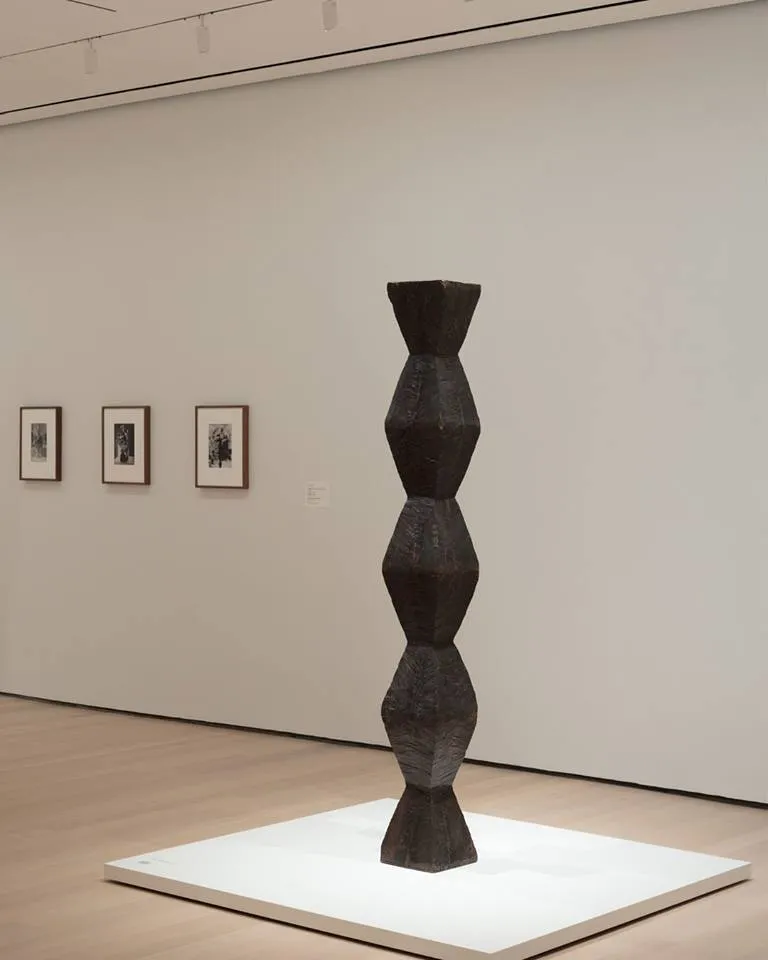
“The Endless Column” is a monumental work, symbolizing the infinite connection between earth and sky, and humanity and the cosmos. It embodies aspiration, yearning, and the concept of the universe’s boundlessness.
The Newborn (1923)
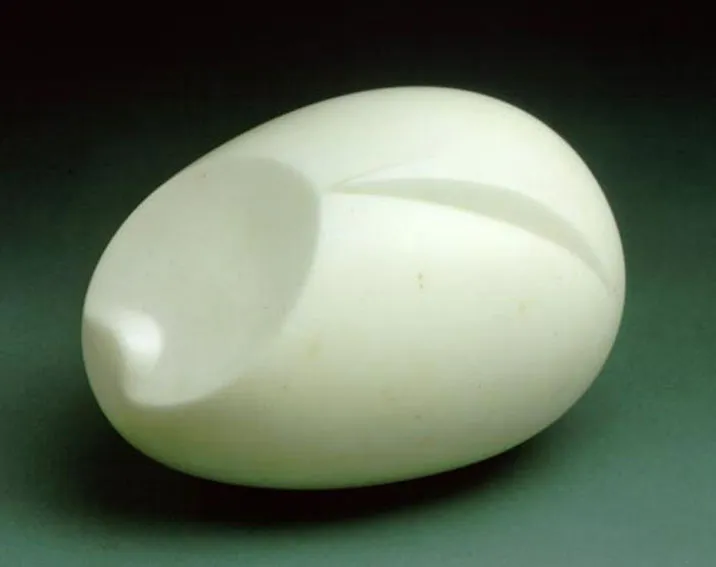
“The Newborn” represents the purity and newness of life, depicting a baby cradled in parental hands. This sculpture conveys tenderness, warmth, and boundless love.
Sleeping Muse (1910)
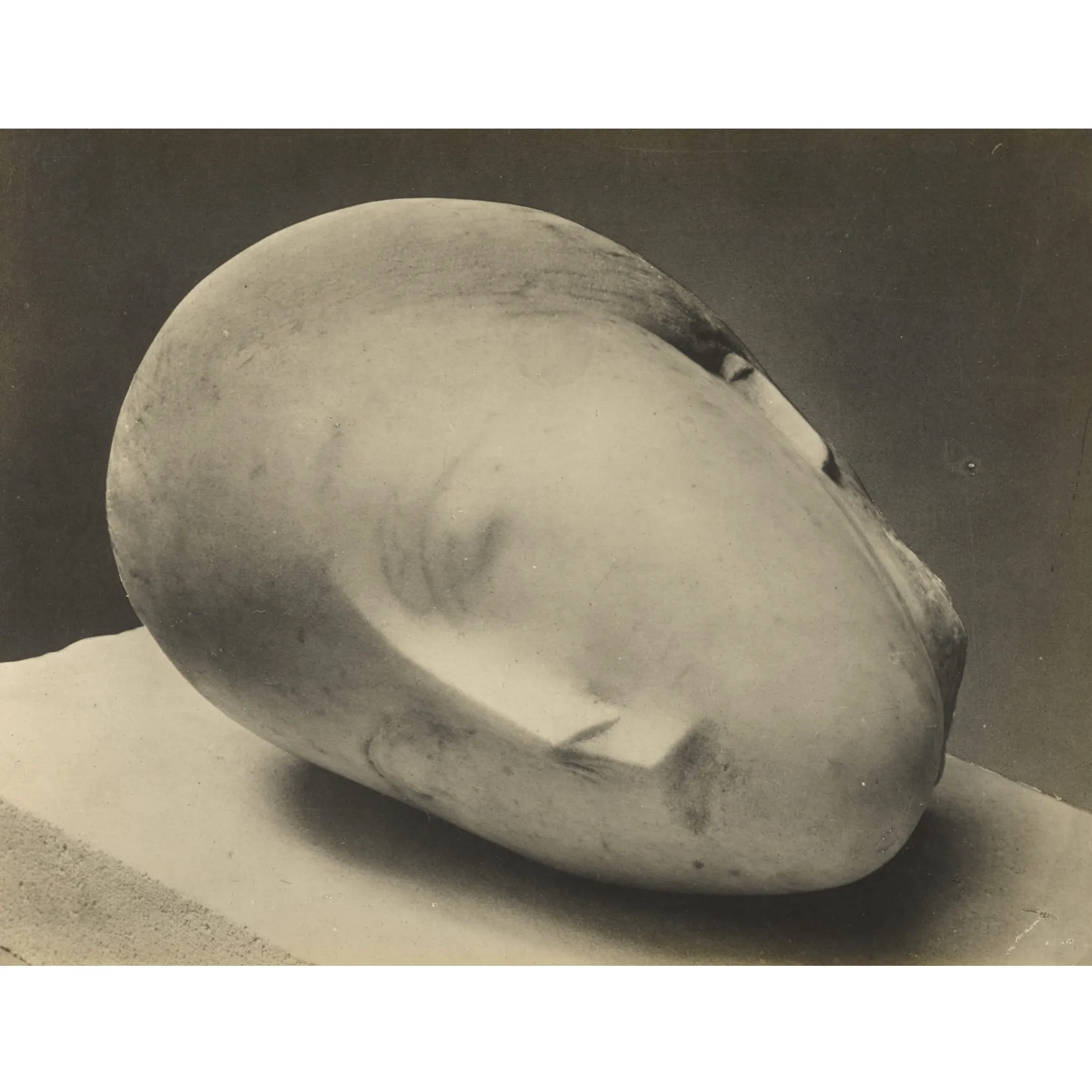
“Sleeping Muse” is one of Brâncuși’s earliest works, portraying a sleeping woman, a symbol of creativity and dreaming. This piece evokes serenity, tranquility, and the hidden beauty of dreams.
Jacques Lipchitz (1891-1973) – A Fusion of Cubism and Abstraction
Jacques Lipchitz, a Lithuanian sculptor, is famous for his style that blended Cubism and abstraction. He created powerful, expressive works, exploring themes of family, love, and human struggle.
Prometheus Strangling the Vulture (1943)
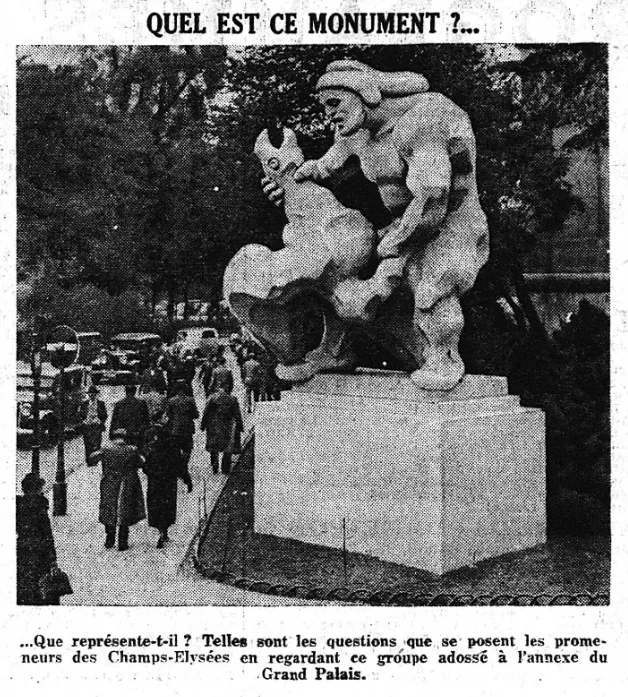
The bronze statue “Prometheus Strangling the Vulture” depicts the mythological figure Prometheus battling an eagle, symbolizing themes of defiance and endurance. This work embodies strength, courage, and the indomitable human spirit in the face of hardship and challenges.
Seated Man with a Guitar (1920)
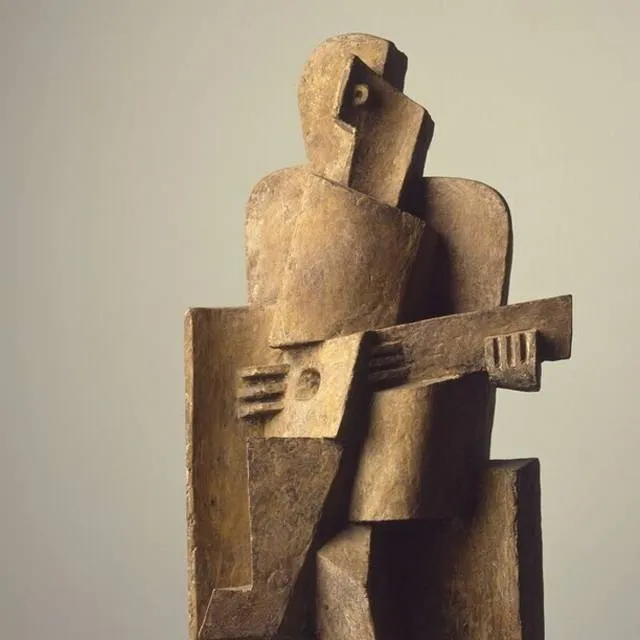
“Seated Man with a Guitar” portrays a man with a guitar, representing the connection between art and human creativity. This sculpture embodies passion, inspiration, and the ability to express emotions through music.
Birth of the Muses (1944–50)
“Birth of the Muses” depicts the creation and emergence of the nine Muses, daughters of Zeus and Mnemosyne, who were patron goddesses of the arts and sciences in Greek mythology. This piece embodies the richness, diversity, and beauty of art and knowledge.
“Mother and Child” (1949)
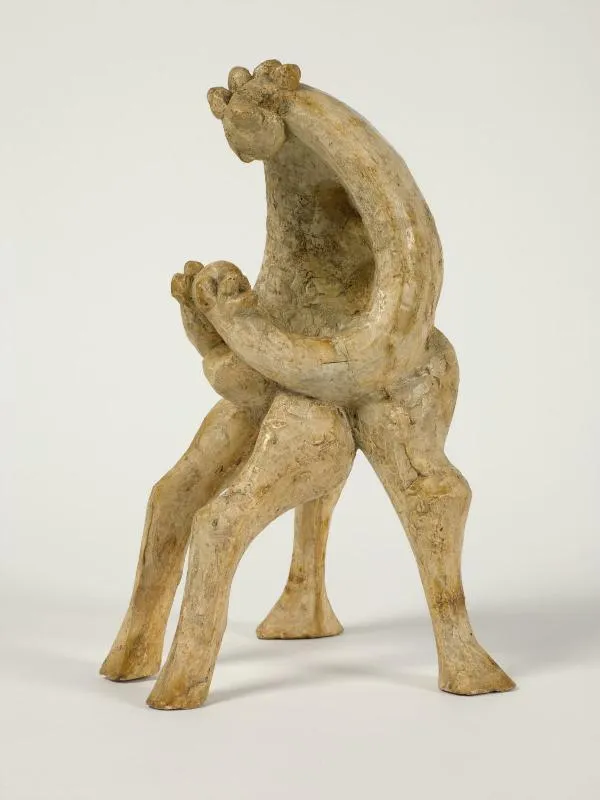
“Mother and Child” is a touching symbol of the intimate bond between a mother and her child. This sculpture embodies the love, protection, and sacrifice of a mother for her offspring.
The Song of the Vowels (1931)
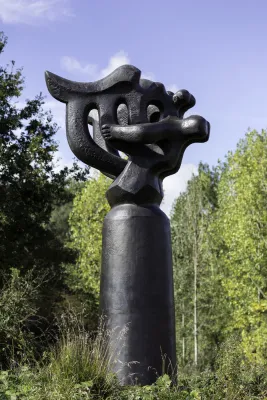
The “The Song of the Vowels” series is inspired by the poem by Hebrew poet Chaim Nahman Bialik. Each sculpture represents a vowel in the Hebrew alphabet and offers an artistic interpretation of the poem.
Jean Arp (1886-1966) – A Versatile Artist of the Dada Movement
Jean Arp, full name Hans Arp, was a French-German artist who played a crucial role in the rebellious Dada movement. He was a versatile artist, active in various fields such as sculpture, painting, poetry, and writing.
Sculpture to Be Lost in the Forest (1932-1933)
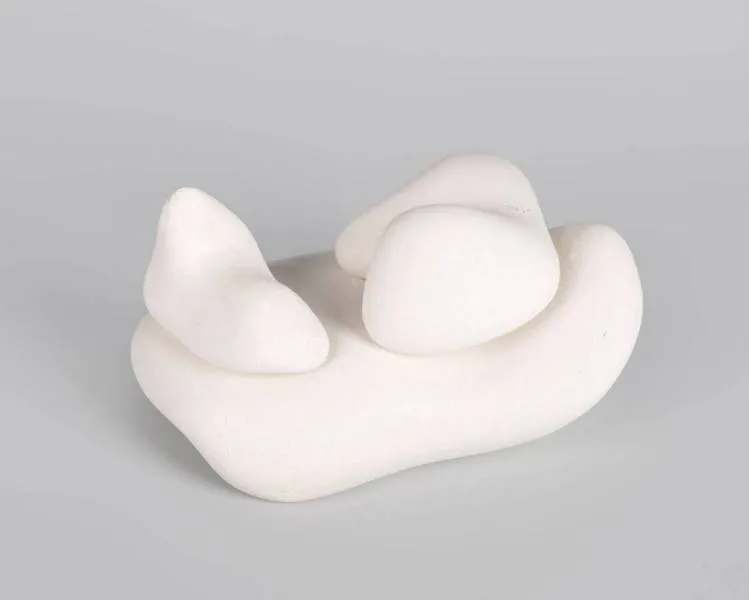
“Sculpture to Be Lost in the Forest” is an abstract work, resembling a woman amidst nature. This piece embodies the harmony between humanity and nature, and the freedom and expansiveness of the soul.
Cloud Shepherd (1953)

“Cloud Shepherd” is a prime example of how Arp combined natural and abstract elements in his work. This sculpture embodies the lightness, airiness, and beauty of clouds in the sky.
Configuration (1930)
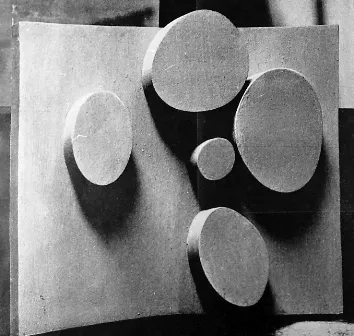
“Configuration” exemplifies Arp’s creativity in abstract painting, featuring round and oval shapes creating a harmonious structure. This piece embodies balance, harmony, and the beauty of form.
Constellations (1921-1922)
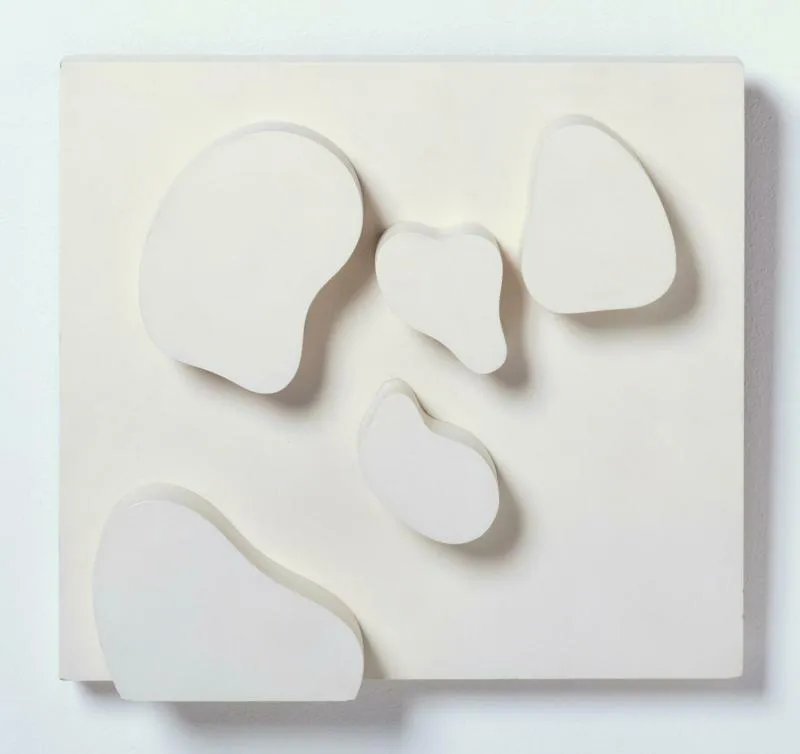
“Constellations” is a series of dynamic abstract paintings, often depicted as constellations or natural forms. This work embodies the infinity, mystery, and beauty of the universe.
Torso with Buds (1961)
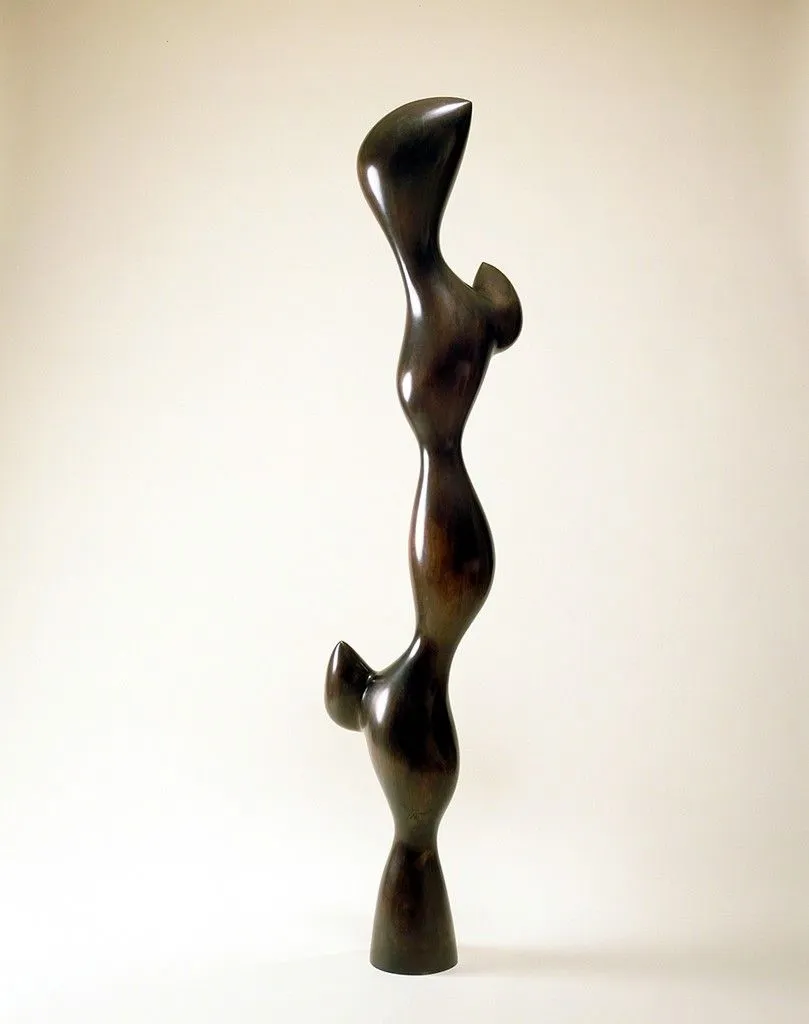
“Torso with Buds” is a sculpture by Arp, showcasing a fusion of the human form and natural elements, like budding flowers. This piece embodies vitality, freshness, and the beauty of growth.
Henri Laurens (1885-1954) – A Pioneer of Cubism in Sculpture
Henri Laurens was a French sculptor and painter, known for his significant contributions to modern art and as a pioneer of the Cubist movement.
La Bacchante (1920)
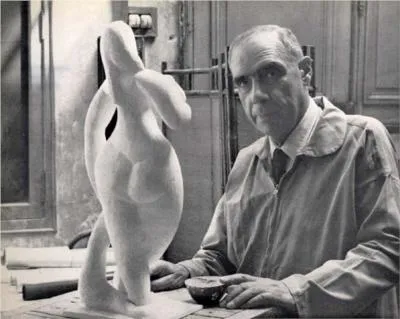
“La Bacchante” (1920) depicts a female figure holding a wine jug, characteristic of the artist’s goddess themes. This sculpture embodies strength, allure, and wild beauty.
Femme à la guitare (Woman with Guitar) (1927)
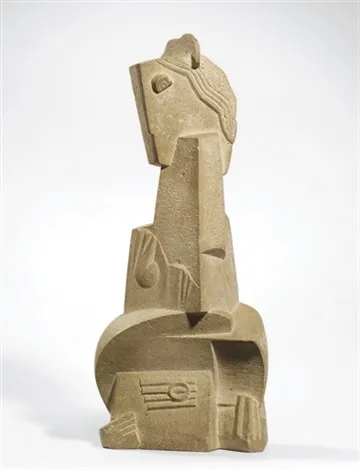
“Femme à la guitare” (Woman with Guitar) (1927) illustrates the interaction between a person and an artistic object. This sculpture embodies grace, elegance, and the connection between music and beauty.
La Grande Musicienne (The Great Musician) (1938)
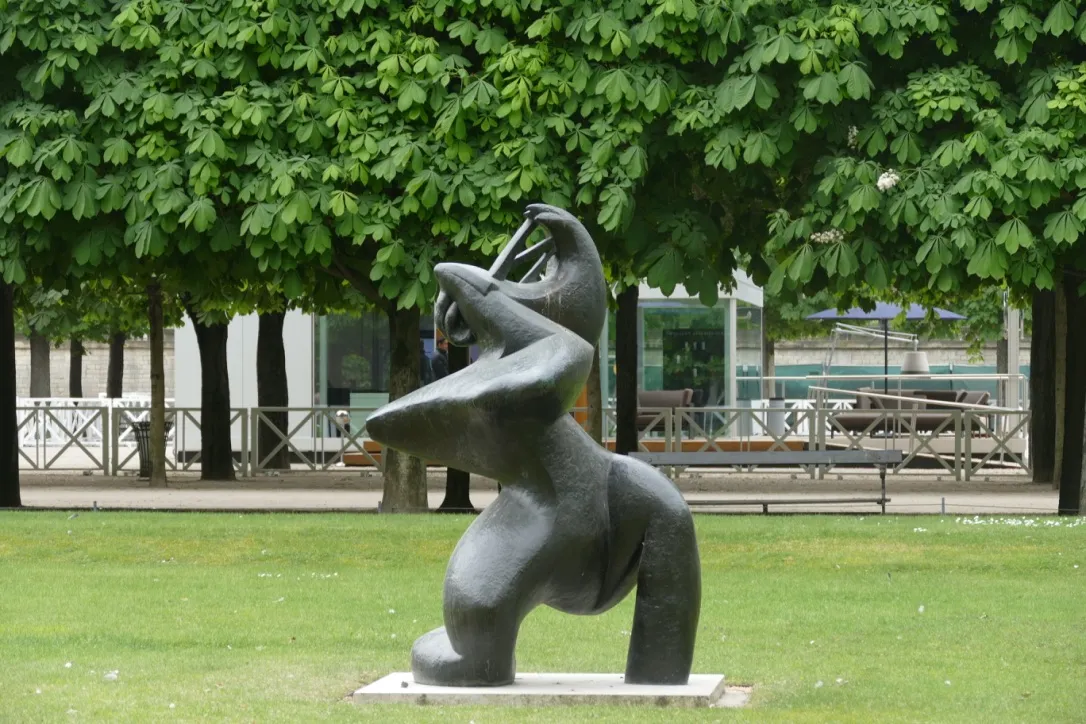
“La Grande Musicienne” (The Great Musician) (1938) depicts a woman with a cello, a symbol of the interplay between artist and music. This sculpture embodies passion, talent, and the ability to express emotions through music.
Nu accroupi (Crouching Nude) (1920)

“Nu accroupi” (Crouching Nude) (1920) is an abstract statue of a crouching woman, in which Laurens focuses on the curves and form of the female body.
Femme assise au fauteuil (Seated Woman in an Armchair) (1927)
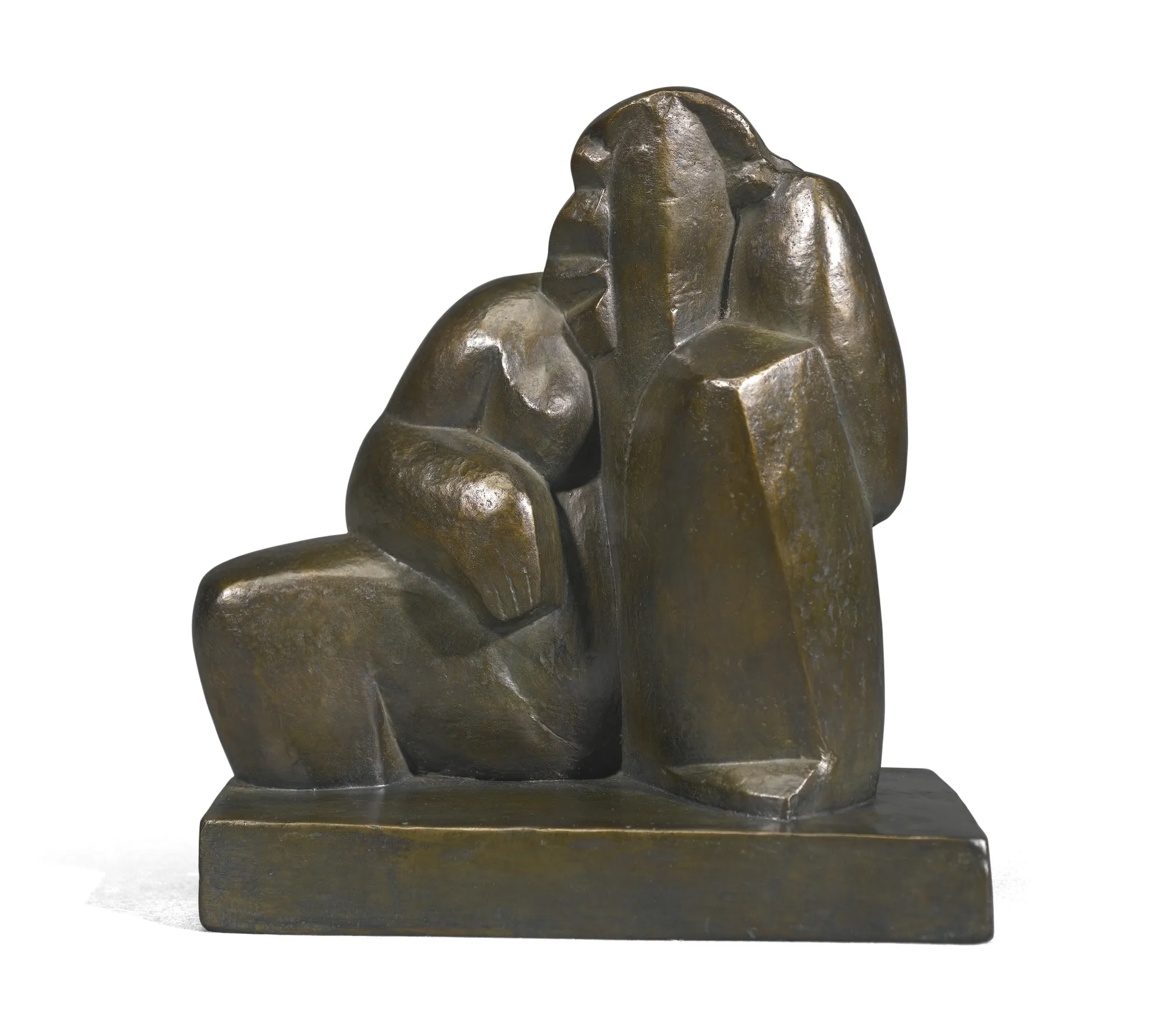
“Femme assise au fauteuil” (Seated Woman in an Armchair) (1927) depicts a woman seated in an armchair. This statue embodies elegance, grace, and the beauty of women.
Conclusion
The famous sculptures of 20th-century France stand as testaments to the relentless creativity and exceptional talent of artists. Each piece carries a unique story, meaning, and style, enriching the world’s artistic heritage.
We hope this article has provided you with insights and inspiration about French sculpture. Continue to explore and learn about other artworks to broaden your horizons and enrich your soul. Which artwork impressed you the most? Share your thoughts with “Du lịch khắp thế gian”!